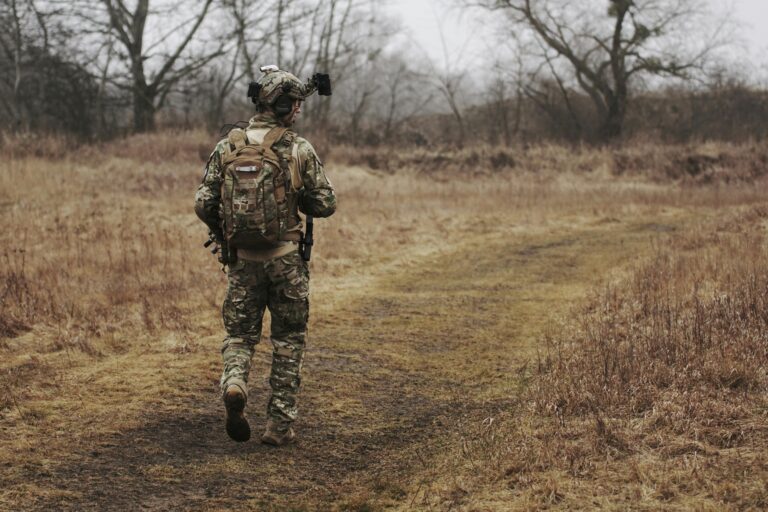As the scope of military operations evolves, the complexity of training programs increases exponentially. Drawing from the ongoing conflict in Ukraine, the defense industry must proactively develop next-generation technologies and common platforms that facilitate our military's ability to train alongside and in sync with our partners and allies. The lessons from Ukraine are pivotal, providing real-world examples that underscore the urgency of addressing current and emerging training needs. Unlike the Pacific theater, Europe possesses a well-established multinational training architecture. NATO's Standardization Agreement (STANAG) provides a set of protocols and specifications agreed upon by member countries to ensure interoperability and standardization among their military forces. Here, we explore three significant training challenges in Europe, integrate insights from Ukraine, and align with the US Army's strategic guidelines and Secretary Wormuth's top six priorities for successful MDO.
Integrated Training Across All Echelons
Training for MDO requires a synchronized approach across all warfighting functions and echelons—from the company level to the combined joint task force headquarters. Insights from Ukraine, such as the strategic use of offensive cyber operations within the targeting process to achieve kinetic effects, underscore the importance of integrating these capabilities in training. Similarly, combining the discrete demands of multinational brigades and divisions, primarily fires-centric, is critical. The defense industry remains best positioned to enhance existing simulation systems that adapt to different training needs while maintaining a unified underlying architecture, converging dispersed forces, and executing precise attacks at echelon as outlined in Secretary Warmuth's directives.
Interoperability with Partners and Allies
It is crucial to achieve interoperability among diverse technological platforms used by the US and its European allies. The gaps are particularly acute in network access and computing capabilities at lower echelons, a challenge highlighted by coalition experiences in Ukraine. By leveraging existing US Army Europe exercises, including Defender Europe, Saber Guardian, and Combined Resolve, the Mission Command Training Program's warfighter exercises and simulations, corps, division, and brigade staffs can integrate MDO concepts into training scenarios, allowing leaders to practice decision-making in complex, multinational, and high-stress environments.
Europe's robust training infrastructure can be easily modified to support MDO training. For example, the frequent electronic warfare encounters in Ukraine demonstrate the need for strong and secure communication systems operating in contested environments across various technological infrastructures. Informed by the decades of lessons learned, MDO concepts can be integrated into NATO training simulations as a first step to inform doctrine and the STANAG. By enhancing compatibility, the Army builds a more cohesive and powerful allied force, supporting robust communications and rapid data sharing among units, services, and allies.
Creating Realistic and Varied Training Scenarios
The unpredictable nature of warfare, as observed in Ukraine, demands a training regime that exposes forces to a wide range of operational and tactical scenarios. For example, Ukrainian forces' integration of unmanned aerial systems (UAS) offers lessons on their potential and limitations, informing how simulations should incorporate both friendly and enemy use of such technologies. Industry must integrate these emerging threats into existing live, virtual, constructive, and gaming platforms to support a broad spectrum of realistic and likely scenarios. For example, the impact of headquarters displacement on operations can be modeled to provide leaders with better insights into the risks of jumping a TOC or TAC during specific phases. The application of artificial intelligence, machine learning, and augmented reality technologies must be robust enough to replicate the complexities of the real world, allowing forces at echelon to get numerous "reps and sets" to build skills and adapt to changing operational environments.
Industry's Role in Shaping the Future of MDO Training
The defense industry's imperative is to develop cutting-edge technologies that address these training challenges head-on. By closely collaborating with military stakeholders, the industry must integrate the lessons learned from Ukraine to ensure that the proposed solutions align with the strategic objectives of the US armed forces and enhance the operational readiness and effectiveness of individuals and units. Whether through advanced simulation systems, integrated training platforms, or scalable technology solutions, the defense industry has the opportunity and the responsibility to shape the future of multi-domain operations training by investing in emerging technologies and fostering adaptable platforms that address interoperability gaps.
Conclusion: Forging a Proactive Path Forward
As we gather at TSIS, let us commit to a future where our military forces are prepared for today's challenges and equipped to face tomorrow's uncertainties. Collaboration between the military and defense industry is crucial to accelerating the integration of MDO concepts into training programs, leveraging NATO's Standardization Agreement framework and comprehensive multinational exercises to build resilient partnerships. Together, we can forge a more secure and robust defense posture through innovative training solutions and steadfast industry-military partnerships. This proactive approach, enriched by real-world lessons from Ukraine, ensures that our training methods remain as dynamic and versatile as the operational environments we aim to master.
Chris Blais is a retired US Army Engineer Lieutenant Colonel with extensive military engineering, protection, and maneuver support integration expertise. His last role was as the Military Engineering Branch Chief at US Army Forces Command, responsible for resourcing the Army's active and reserve engineer forces. He previously served as an Engineer Battalion Commander, Battlespace Owner, Forward Operating Base Commander, and Senior Maneuver Support Observer/Controller-Trainer at the Joint Readiness Training Center. Chris helps industry understand multi-domain operations (MDO), leveraging his deep knowledge of integrating enablers into maneuver operations to provide strategic insights for leaders and product developers in the field.
